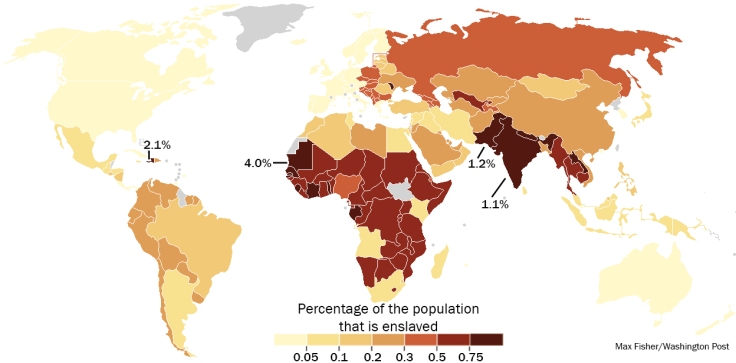I recently saw this map in a Washington Post article about modern day slavery and was immediately was struck by the spatial extent and amount of slaves in today’s global economy. As stated in that article, “This is not some softened, by-modern-standards definition of slavery. These 30 million people are living as forced laborers, forced prostitutes, child soldiers, child brides in forced marriages and, in all ways that matter, as pieces of property, chattel in the servitude of absolute ownership.” This map shows some important spatial patterns that seem to correlate to economic and cultural factors.
This got me thinking to the geographies of supply chains. The growing spread of the informal economy (a.k.a.-illicit trade, black market, etc.) has created opportunities for exploitation. Many argue that free trade was created this power differential between the laborers who create these mass-manufactured products and the global consumers. These critics argue that fair-trade, not free trade, with lead to sustainable economic growth and minimize social injustice.
Questions to Ponder: What economic and cultural forces are needed for slavery to thrive? What realistically could be done to lessen the amount of slavery in the world today? How are your spending habits part of the system?
This video (archived on scoop.it here) is a chilling glimpse into the worst and darkest side of the global labor system.




1 Pingback